Richard Lathrop
Active member
Looking at photos from the 1950's and earlier I noticed that duck boats were not grassed. When did this become common?
Rick Lathrop
Rick Lathrop
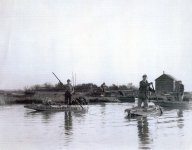
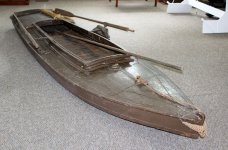



Richard~Thanks, photos like this had me wondering.

1950s MAN DUCK HUNTER ROWING DUCK BOAT DECOYS ON REAR DECK AND KILLED DUCKS ON FRONT BARNEGAT BAY NJ USA Stock Photo - Alamy
Download this stock image: 1950s MAN DUCK HUNTER ROWING DUCK BOAT DECOYS ON REAR DECK AND KILLED DUCKS ON FRONT BARNEGAT BAY NJ USA - G6A5CC from Alamy's library of millions of high resolution stock photos, illustrations and vectors.www.alamy.com
and this one.

1920s 1930s SENIOR MAN DUCK HUNTER STANDING IN SNEAK-BOX BOAT ABOUT TO DEPLOY DECOYS IN BARNEGAT BAY WETLANDS MARSH NEW JERSEY Stock Photo - Alamy
Download this stock image: 1920s 1930s SENIOR MAN DUCK HUNTER STANDING IN SNEAK-BOX BOAT ABOUT TO DEPLOY DECOYS IN BARNEGAT BAY WETLANDS MARSH NEW JERSEY - AAKWTR from Alamy's library of millions of high resolution stock photos, illustrations and vectors.www.alamy.com
but then you have this photo from same set.

1920s MAN DUCK HUNTING STANDING IN SNEAKBOX BOAT IN MARSH AiMING SHOTGUN BARNEGAT BAY NEW JERSEY USA Stock Photo - Alamy
Download this stock image: 1920s MAN DUCK HUNTING STANDING IN SNEAKBOX BOAT IN MARSH AiMING SHOTGUN BARNEGAT BAY NEW JERSEY USA - FPW1GJ from Alamy's library of millions of high resolution stock photos, illustrations and vectors.www.alamy.com
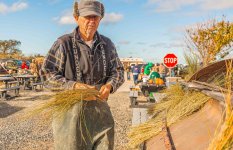
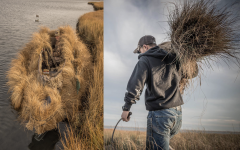
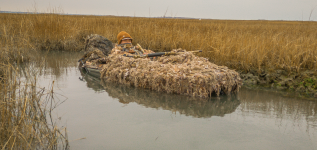
Anthony~Ahhh Grassing, the "worst-part" of the duck season! Definitely a labor intensive job but nothing truly compares quite like it...
Interesting question though, as Steve mentioned from what I've learned the Thatching Rails were likely developed here on Long Island NY. I know where I live in my town the "Salt-Hay" was a huge industry in the late 1800's early 1900's. We are blessed enough with some beautiful long grass that makes the perfect cover.
I have to admit, nowadays after many years of grassing and limited time I've switched over to synthetic solutions the raffia grass, camo netting and a combo of both.
View attachment 58509
View attachment 58507
View attachment 58508
Sneakboxes were routinely grassed with Sedge and and seaweed on the Jersey coast going back to its inception in the late 1800sLooking at photos from the 1950's and earlier I noticed that duck boats were not grassed. When did this become common?
Rick Lathrop
Who just uses one vessel! You must have one for each day of the season duh!Anthony~
Cutting Salt Hay indeed requires a bit of time, but....not too much if you have just one vessel!
All the best,
SJS
Did they have grass rails for long term grassing, or did they gather on-site each hunt or maybe re-use what was cut and left on site?Sneakboxes were routinely grassed with Sedge and and seaweed on the Jersey coast going back to its inception in the late 1800s
Eric & Jode~Did they have grass rails for long term grassing, or did they gather on-site each hunt or maybe re-use what was cut and left on site?
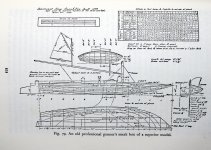
Did they have grass rails for long term grassing, or did they gather on-site each hunt or maybe re-use what was
Jode~It varied by Gunner and location. Grass and weed was never in short supply. So it was usually gathered on site along the coast. Also it made it safer and easier to traverse open water in rough weather without the added weight and water absorption of grass.
